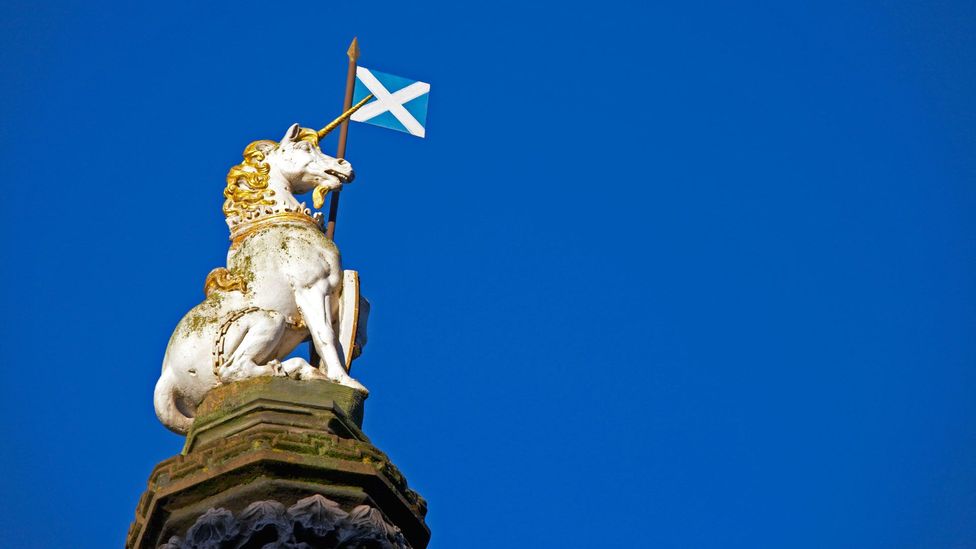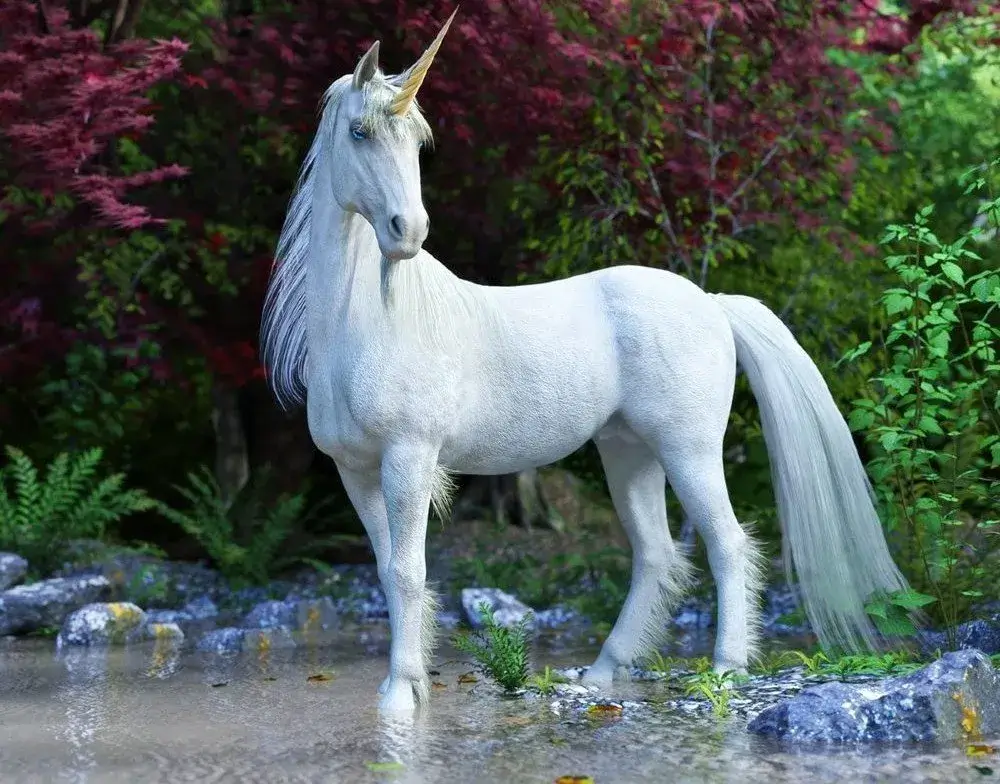Posted by Maris on 26th Sep 2023
Why is the Unicorn Scotland’s national animal?
Elyse Waters, who is hosting Unicorns: A Zoological Analysis as part of Scotland’s history festival, became interested in the fabled beast after reading a medieval cookbook that included a recipe for cooking it.
During her research, the historian learned that the Unicorn was viewed as the natural adversary of the lion, a symbol that the English royals embraced about a century earlier.
Folklore holds that the lion and unicorn loathe each other, a tradition that dates back to 3,500 B.C.
Who is the second natural foe? The elephant’s given name.
“It was always said that the unicorn would always defeat the elephant, that it possessed such incredible strength that, despite its diminutive size, it couldn’t be defeated by something as large and powerful as an elephant.”
“I believe it had something to do with the idea of nobility and purity as well.”

“Among the various depictions of the unicorn and the stories that go with it, one in particular stands out: the water cleansing story.” When a snake approached the watering hole, it poisoned it, but the unicorn appeared and dipped its horn into the watering hole to cleanse it for all the other animals.
“So it had this power to dominate, but instead of using it, it used it to protect and provide resources for other animals.” It became the ultimate animal throughout the Middle Ages, when there was a tremendous emphasis on chivalry. It had the ability to accomplish whatever it wanted with that power, but it chose to use it to better other things.
“When you combine this with all of the other stories about its greatness, power, and ferocity – you can understand why they wanted it.”
The unicorn has been assumed to exist in Western portions of the world for approximately 2,500 years, and King Robert selected it as Scotland’s national animal in the late 1300s.
The reality of the fabled beast was only disproved in 1825 by scientist Baron George Covier, who noted that an animal with a split foot could not have a single horn protruding from the top of its head. For about 4,000 years, the unicorn has been revered, particularly in eastern Asia, where it was seen as a benign bringer of good luck.
“While Dr. Dove’s experiment with a bull calf disproved the theory that a unicorn could not physiologically exist in 1900, by this point, no one really believed unicorns existed in the first place,” said Ms Waters.
For thousands of years, this profoundly ingrained European notion influenced society’s elite. Aristotle, based on Ctesias’ book Indica, wrote on the physical appearance of the unicorn, including the oldest mention in Western literature of India, which described the unicorn’s herd habits.
Ctesias, as King Darius II’s court physician, heard stories from all over the world, some of which were tales of the mythical unicorn, which, given his position in the palace, was accepted as fact.
The unicorn is assumed to have been impacted by a variety of species, the most common of which is the Indian rhino.

“There are also animals such as the Tibetan antelope, kiang, and yak, as well as the Persian onager, which contributed various characteristics such as personality and coloration.”
“When we think of unicorns now, we think of this horse-like body, pure white, with a white horn that looks like a narwhal tusk, which is very different from how the Greeks and Romans first talked about it.”
“They thought it was quite large, with really powerful hooves that were single, like a sheep, rather than split like a horse.” The antelope would have added color to elements like the horn, which was supposed to be quite long and black.
“By the time we get to Europe, a lot of people haven’t been to these places where the other types of animals came from, so they could only work off of what animals they could see in bestiaries’, or drawings of animals they knew themselves.”
“As you can see in these bestiaries, unicorn drawings were given characteristics from animals such as greyhounds, sheep, and goats.” The depiction of the unicorn reduced and shrank until it became this highly sensitive, goat-like creature.
“In fact, in some depictions, they appear as small as mice; in others, they appear larger, around the size of a boar, and they have had various characteristics added to them as stories do over time.” So they could be a boar with a pig’s head and a horse’s tail, or a goat with a lion’s tail.”
The unicorn ascended to dominance in medieval Europe, influencing every level of society for thousands of years. This only increased Elyse’s obsession with the creature.
“I became very interested in how something that didn’t actually exist, the unicorn, became so influential to people.”
“Because merchants sold unicorn horns, which were frequently given as gifts to kings or religious institutions.” These items would cost tens of thousands of pounds even before currency conversion. They were truly extravagant.”
Because the unicorn was so deeply ingrained in their daily lives, it became generally accepted.

“Because the horn was used as an antidote in medication, people weren’t just talking about these things as mythological creatures, but were actually interacting with what they thought were unicorns.” That personal encounter, that touch, raises it above lofty aspirations or untouchable ideals. It evolved into a near-physical ideal.”
This was a major element in people believing the unicorn existed for thousands of years.
“Selling a myth involves four main aspects.
“It must meet a need, which the unicorn fulfilled by being a poison antidote.”
“It has to fit into the scientific knowledge of the time; it can’t be this explanation of ‘just because magic’ or ‘the supernatural’.” It had to be reasonable and understandable to the general public.
“It has to be something people can interact with, which emphasizes the importance of touch and the importance of the items sold and traded as unicorn horns.” The physicality was crucial no matter what they were used for, whether goblets, jewelry, or even just table decorations.
“Also, how there needed to be authenticity tests for these things – you couldn’t just hand someone something and say it works; there had to be some sort of confirmation that it works.” We can see the steps the horn had to go through before becoming dominant in society.”
Unicorns’ current societal portrayal has altered considerably from their majestic, towering stature to a more child-oriented story. It is greatly influenced by Asian depictions of unicorns, and the concept of a completely benign creature has infiltrated much of modern civilization as a result of the proliferation of media. In medieval Europe, however, the unicorn might be used for either good or evil. It could represent purity or lust, depending on how it is depicted.
It appears that it will always play a role in society, from Charlie the Unicorn to My Little Pony.


